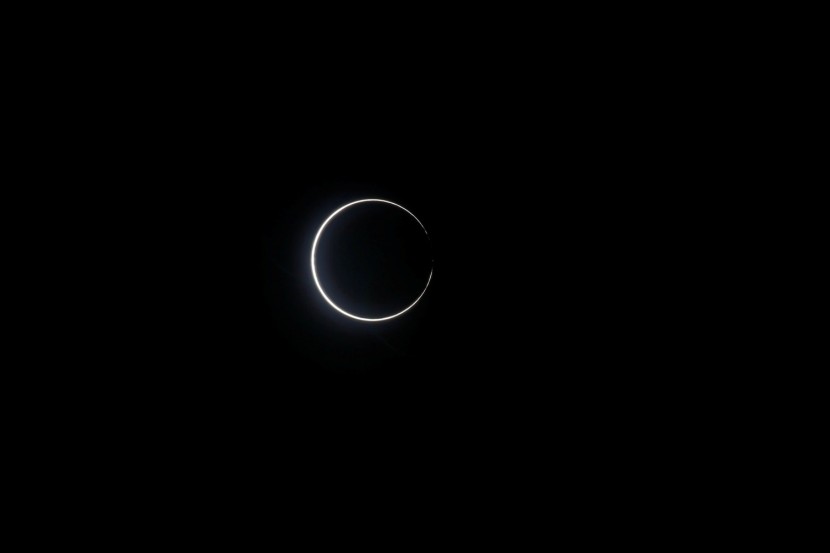
A dramatic "ring of fire-like" solar eclipse was witnessed by Skywatchers that stretches from a narrow band from west Africa continuing to the Arabian Peninsula, India, and the Far East area.
The occurrence of the so-called annular eclipses happens when the Moon passes between Earth and the Sun but it is not quite close enough to the Earth that it cannot completely cover sunlight resulting in a thin ring of solar disc visible.
The phenomenon happens every one or two years but it is only visible on a narrow pathway around the planet.
According to MSN, the eclipse on Sunday is welcomed by the summer solstice, the northern hemisphere's longest day of the year, the summer solstice occurs when the north of the Earth is tilted most directly towards the Sun.
The eclipse tagged as the "ring of fire" was first visible in the northeastern region of the Republic of Congo starting from 5:56 local time or 04:56 GMT which is just a few minutes after the sunrise.
The eclipse's point of maximum blackout duration lasted for a minute and 22 seconds.
The phenomenon reached the maximum eclipse as it arc eastward across Africa and Asia, which achieved a perfect solar halo around the Moon when it is over the Indian State of Uttarakhand which is near to the Sino-Indian border at around 12:10 local time or 0640 GMT, BBC reported.
The alignment of three celestial bodies which includes the Moon, Earth, and Sun was only visible for 38 seconds.
However, in Nairobi which is located in East Africa, observers only witnessed a partial eclipse due to the blockage of clouds in the sky for several seconds which is the same moment when the Moon should have closely hidden the Sun.
In a report by CNet, Susan Murbana shared that despite the blockage it is still very exciting because of obsession with eclipses.
The mind behind the Travelling Telescope educational program along with her husband the Chu, Murbana shared that it is a very kinds experience despite the interference of the clouds as they were able to see most of it.
Murbana also shared that if there are no restrictions imposed due to the ongoing global health crisis, they initially planned to set a trap to southern Kenya's Lake Magadi wherein skies are clearer than the sky in the capital.
Abiding by the restrictions of social distancing and avoidance of masa gathering, Murbana still managed to share it to the people as she posted the event on her social media account.
Murbana shared that an estimated 50 people joined the watch party via Zoom aside from a lot of people who also watched via Facebook live.
Paris Observatory's astronomer, Florent Delefie shared that the annular eclipse is only visible for about two percent of the surface of the Earth.
He also mentioned that watching the eclipse is like switching a 500-watt to a 3-watt light bulb because it is cold light that is why it is hard to see as well.
Related article: Supermassive Blackhole's Heartbeat Keeps on Beating After a Decade
© 2025 HNGN, All rights reserved. Do not reproduce without permission.








